It is The Year of the Rabbit. Gung Hay Fat Choy.Â
 It’s the 30th Lunar Day of the 12th Lunar month and the first day of year 4708 in the Chinese calendar. A tired Tiger retires to rest for 12 years, until its time comes again, handing over the duties to successor Rabbit, just waking from its 12 years of rest. (Notice the neuter gender. We’re having a little discussion as to male or female.) The  yearly rotation is the Rat, Cow, Tiger, Rabbit, Dragon, Snake, Horse, Sheep, Monkey, Chicken, Dog and Pig. Â
 At this writing I don’t know how the Rat came to be first, but this story, like all others, can vary a bit – or a lot – depending on what part of China you are in plus intellectual and cultural discussions on astronomy, ancient writings, legends of kings in early times and more. I leave it to you to follow your path of interest. It gets complicated. The website http://www.chinapage.com is a start.Â
In Chinese mythology, the Year of the Rabbit symbol represents longevity and it is believed that the Rabbit enjoys a close relationship with the moon. Westerners may refer to the man in the moon, but when the Chinese peer up at the moon, what they see is the Rabbit standing by a rock, holding a cup that overflows with the elixir of immortality. As symbols go, this is considered one of the finest.Â
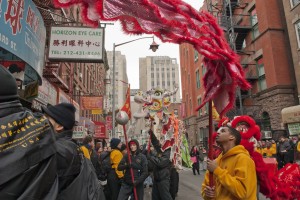 Believed to have started in the 14th Century, BC the Chinese New Year celebration is the world’s longest running party. It is also known as Spring Festival. The Celebration usually starts in February (Western Calendar)  with the new Moon and ends 15 days later with the New Year’s Lantern Festival. The Lantern Festival dates back more than 2000 years to the Han Dynasty. Â
Believed to have started in the 14th Century, BC the Chinese New Year celebration is the world’s longest running party. It is also known as Spring Festival. The Celebration usually starts in February (Western Calendar)  with the new Moon and ends 15 days later with the New Year’s Lantern Festival. The Lantern Festival dates back more than 2000 years to the Han Dynasty. Â
In New York City we annually flood Chinatown in lower Manhattan to follow the multiple teams of Dragon Dancing Teams and Lion Dancers, accompanied by drums and cymbals, through the narrow street wishing all Gung Hay Fat Choy.Â
The Dancing Dragons and roaring lions compete for space on the small streets and restaurants as they go door to door bowing to the people, bringing them good luck through the year. Of course the little red envelopes with some Yen inside goes a long way to help bring luck. (Note to tourists – you may touch the Lions’ beard, but NEVER, NEVER touch their horns – very bad luck. ) The Lion Dance symbolizes good fortune and protects against negative influences.Â
Red is the auspicious color in China. The pink peach flower and Japanese sakura are very popular choices for the flower arrangement. Â Chinese calligraphers write the New Year’s poetry on the red color paper and people pasted them on the top and both of sides of main-entry door. They said this custom comes from the story of man-eater Nian animal, which was afraid of red. At the beginning, people drew The God of Door images on the red-color peach tree wood hanging on the door to scare the devil spirit away. Later, Chinese use red color paper insteadÂ
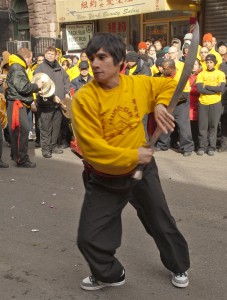 Kung Fu fighters show their skills. Here are Shaolin fighters from Yees Hung-ga International Academy http://yeeshungga.com. Their skills and techniques have been passed down from the Shaolin Temple, founded in central china 495 AD, where generation after generation of monk generals and soldiers protected the temples from wars and riots of society  Â
Kung Fu fighters show their skills. Here are Shaolin fighters from Yees Hung-ga International Academy http://yeeshungga.com. Their skills and techniques have been passed down from the Shaolin Temple, founded in central china 495 AD, where generation after generation of monk generals and soldiers protected the temples from wars and riots of society  Â
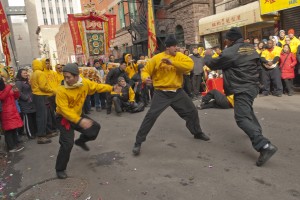
Â
Last stop 0f the day – food shopping. Prices and quality in Chinatown are the best.Â
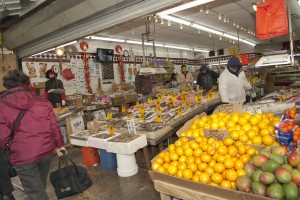 Â
Â
Â
 Happy New Year. Gung Hay Fat Choy. The year of the Rabbit. Â
Come to the celebration next year, the year of the DRAGON
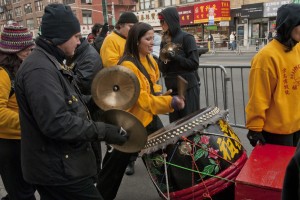
http://www.barbaranelson.com/Â
VISUAL STORIES from NEW YORK CITYÂ by BARBARA NELSON